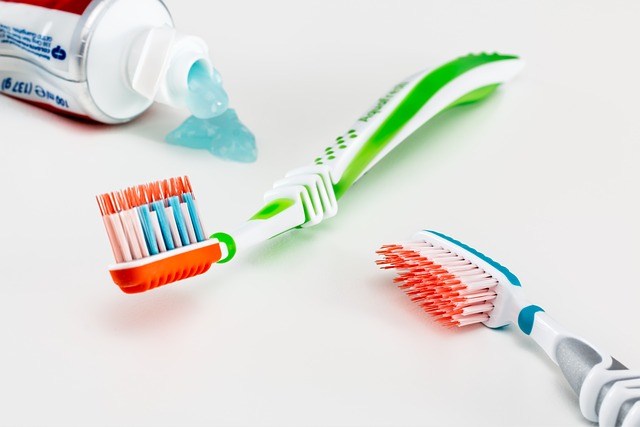Using Gauze After Tooth Extraction: Your Comprehensive Guide
Welcome to our comprehensive guide on using gauze after tooth extraction! If you’ve ????recently undergone???? this dental procedure, ????you may have been advised to place???? gauze over the extraction site to aid in clot formation and minimize ????bleeding. But what exactly does gauze do, how should it be used, and what are the best ????practices for a smooth recovery? In this article, we will answer all these questions???? and provide you with the essential information you need to navigate your post-tooth extraction journey. So sit back, relax, and let us guide you through this process with our friendliest tone and helpful tips.
1. Understanding the ????Importance of Gauze After ????Tooth Extraction
After undergoing???? a tooth extraction, your dentist will most likely place a gauze pad ????over the extraction???? site. While this step may seem insignificant, the importance of???? gauze after tooth extraction should not be overlooked. Here’s why:
1. Controls Bleeding: One of the primary functions of gauze after tooth extraction ????is to ????control any bleeding that may occur. The gentle pressure applied???? by the gauze helps to form a clot, which aids in the healing process.
2. Promotes Healing: Gauze acts as a protective barrier, preventing food particles and bacteria from entering the wound. By covering the extraction site, it reduces the risk of infection ????and encourages faster healing.
3. Assists with Pain Relief: Gauze offers a cushioning effect that helps to alleviate pain and discomfort after a tooth???? extraction. Additionally, it can ????minimize swelling and bruising.
4. Allows for Proper Blood Clot Formation: Gauze helps to ????ensure that a blood clot forms over the socket. This clot is crucial for protecting the underlying bone and nerve endings, as well as facilitating the regeneration of new tissue.
5. Prevents Dry Socket: Dry socket, a painful condition that occurs when the blood clot becomes???? dislodged, can significantly delay the healing process. Gauze helps in stabilizing the clot, reducing the risk of developing dry???? socket.
Remember: Follow your dentist’s ????instructions regarding the use of gauze after tooth extraction. If bleeding persists or ????you experience excessive pain, be sure to contact your dental professional for guidance.

2. Step-by-Step Guide: How to Properly Use Gauze???? for Post-Extraction Care
Gauze is an essential tool for proper post-extraction care after a dental procedure. Here’s a step-by-step guide to help you use gauze effectively and ????ensure a smooth recovery.
1. Be gentle: After the extraction, your dental???? professional will provide you ????with sterile gauze pads.???? Depending on the size of the extraction site, fold the gauze to create a small, thick pad. It’s crucial to handle the gauze with clean hands, ensuring no additional bacteria or debris contaminate the ????wound.
2. Place the gauze pad: With the folded gauze in hand, ????locate the extraction site and gently place the gauze over it. Apply slight pressure by???? biting down on the gauze, allowing it to absorb any excess blood. Be cautious not to bite too hard, as it may cause???? further bleeding or dislodge blood clots necessary for healing. **Remember, ????a little pressure goes a long way!**
3. Timeframe: Ideally, maintain this gentle???? pressure for about 30 minutes. If the bleeding persists, replace???? the gauze pad with a fresh one and continue the same procedure. Keep in mind that a certain amount of bleeding is normal, but if it’s excessive or doesn’t seem to slow down after a few hours, contact your dental ????professional immediately.
4. Avoid disrupting the clot: Removing the gauze prematurely can dislodge the blood clot forming in the extraction site. This clot is essential???? for proper healing, as it acts as a natural barrier, preventing infection and promoting the growth of new tissue. When ready to remove the gauze, do so slowly without disrupting the clot, ensuring a smooth transition.
Remember, these steps are meant to ????guide you in properly ????using gauze for post-extraction care. Always consult with your???? dental professional to receive personalized advice and post-operative instructions specific to your procedure.???? Following these guidelines will ????help you reduce???? discomfort, promote healing, and ensure efficient recovery after your dental extraction.
3. Why???? Gauze is Essential for Healing and Protecting the Extraction Site
Using gauze after a dental extraction ????is crucial ????for ????optimal healing and protecting the extraction site. Here ????are some reasons why gauze is an essential part of post-extraction care:
Preventing Bleeding: Gauze helps control ????bleeding by creating gentle pressure on ????the extraction site. This pressure helps form a clot, which is necessary for the healing process. Placing a piece of gauze over the site and biting down gently for about 30 minutes can significantly reduce bleeding and promote faster healing.
Minimizing???? Infection: Gauze acts as a protective barrier, preventing any food particles or bacteria from entering the ????extraction site during???? the initial ????healing period. By covering the area, gauze reduces the risk of infection, allowing the site to heal undisturbed. Remember to change the gauze as per your dentist’s recommendations to ????maintain optimal cleanliness.

4. ????Choosing the Right Type of Gauze for Tooth Extraction Aftercare
After a tooth extraction, proper aftercare is essential for a smooth recovery. One important aspect of aftercare is choosing the right type of gauze for the healing process. Here are some tips to help you make the best choice:
-
???? ????
- Size: Use ????gauze pads that are???? large enough to cover the extraction site adequately. This will ????help to control bleeding and prevent the formation of blood clots.
- Nonstick: Opt for nonstick gauze pads to protect the extraction site and minimize ????the risk of disturbing the healing process when changing ????the gauze.
- Thickness: Choose a???? thick gauze pad that provides sufficient cushioning to???? absorb any excess blood or fluids without sticking to the wound.
????
Additionally, it’s important to ????replace the gauze regularly to maintain cleanliness and prevent the buildup of???? harmful bacteria. Aim to change???? the gauze ????every 30-45 minutes during the first few hours following the extraction, then gradually reduce the frequency as bleeding subsides. Remember, if you have any concerns or questions about???? gauze selection or aftercare, don’t ????hesitate to reach out to your dentist for???? guidance. Take care???? of yourself and ensure a successful recovery!

5. Time to Heal: How Long Should Gauze???? be Used After a Tooth Extraction?
After???? a tooth extraction, ????it’s crucial to allow ample time for healing. One essential post-extraction measure is the use of gauze ????to control bleeding and facilitate blood clot formation. Gauze not only protects the empty socket but also promotes faster and smoother recovery. So, how long should gauze be used after a tooth extraction? Here’s ????what you need to know:
1. Immediate post-extraction: To control bleeding, gently bite down on the gauze pad placed by your dentist. Maintain???? firm???? pressure for about 30-45 minutes and avoid changing the gauze excessively during this time. It’s normal for the pad to become saturated, but if bleeding persists heavily after an hour, contact your dentist for further instructions.
2. First 24 ????hours: After the???? initial bleeding subsides, it’s typically recommended to change the gauze every 30-45 minutes for the first few hours. However, as the bleeding diminishes, you???? can reduce the frequency to every 2-3 ????hours. Remember to bite down ????firmly on the gauze to maintain pressure. Be cautious not to disturb the blood clot forming in the extraction site. If the bleeding stops during this period, you may discontinue ????using the gauze altogether.
6. Managing ????Post-Extraction Bleeding: Tips and ????Tricks with Gauze
Bleeding after???? a tooth extraction is a common concern, but with the right techniques, you can effectively manage it. ????One of the ????simplest and most effective ways to control post-extraction bleeding is by using gauze. Here are some tips and tricks to help you effectively manage bleeding using gauze:
- Choose the right type of gauze: Opt for sterile gauze pads that are specifically designed for dental use. They are typically???? made of non-stick material and should be free from any irritating substances.
- Apply???? direct pressure: Fold???? the gauze pad and place it directly over the extraction site. Apply firm and consistent pressure by biting down gently. This will help to promote blood clot formation and minimize bleeding.
- Change the gauze regularly: It is essential to change the gauze every 30 minutes???? or as directed by your dentist. This???? will help maintain the pressure and???? ensure cleanliness.
- Avoid disturbing the blood clot: When removing the gauze, do so gently to avoid disturbing the forming blood clot. Tugging???? can dislodge the clot and lead to additional bleeding.
- Avoid vigorous rinsing or spitting: For the ????first 24 hours after the extraction, avoid rinsing your mouth vigorously or spitting forcefully. This can???? also disturb the???? blood clot and result ????in prolonged bleeding.
- Avoid smoking or using a straw: Smoking and using a straw can create a suction force in the mouth, which can dislodge ????the blood clot and cause bleeding. It is best to avoid these activities during the healing process.
By following these tips and tricks, you can ????effectively manage post-extraction ????bleeding with gauze. However, if bleeding persists or increases, ????it is important to contact your dentist for further guidance. They will be able to assess the???? situation and provide appropriate solutions to ensure your healing ????process is smooth and uneventful.
After a tooth extraction, it is crucial to keep???? the extraction site ????clean to prevent???? infection and promote healing. One helpful tool in this process is ????gauze. Gauze can ????assist in ????preventing infection by:
- Removing excess blood and saliva: Gauze ????is highly absorbent, allowing it to effectively remove any excess blood or saliva from???? the extraction site. By keeping ????the area clean and dry, it reduces the risk of bacterial ????growth and potential infection.
- Providing a protective barrier: Placing a piece of gauze over the extraction site can act as ????a barrier, keeping food particles and other substances away from the wound. This prevents???? potential contamination and ????provides an extra layer of protection against infection.
- Promoting blood clot formation: Gauze can aid in the formation of a blood clot, which is a crucial step in the healing process. By applying gentle pressure with gauze, it helps control bleeding and encourages the formation ????of a stable clot,???? reducing ????the risk of infection.
Remember to follow your dentist’s instructions on how often to change the gauze and when to stop using it. Keeping the ????extraction site clean with the assistance of gauze plays an essential role in preventing infection and ensuring a???? smooth recovery.
8. Gauze as a Comfort Measure: Relieving Pain and Swelling After Tooth Extraction
Gauze is a simple yet effective comfort ????measure that can greatly ????contribute to relieving pain and reducing swelling after a tooth extraction. By following these tips, ????you can maximize the benefits of ????using gauze to facilitate your healing process:
1. Use clean gauze: It is crucial to ensure that the gauze you use is sterile and free from any dirt or contaminants. This will ????help prevent infection and promote a healthy healing environment.
2. Apply gentle pressure: After your tooth extraction, place a folded piece of gauze directly over the extraction site. Gently bite down on the gauze to create???? a cushioning effect, which can help minimize pain and alleviate swelling. Avoid excessive pressure, as it may disrupt the clot formation or cause unnecessary discomfort.
3. Change the gauze regularly: To maintain cleanliness and freshness, it is important to ????change the gauze regularly. Replace it every 30???? minutes or as directed by your???? dentist or oral surgeon. This will help???? keep the extraction site clean and aid in controlling bleeding.
9. Frequently Asked Questions: Everything You Need to Know About Gauze and Tooth Extraction
Having a ????tooth extraction can be a nerve-wracking experience, but with???? the right knowledge, you can feel more comfortable???? during and after the procedure. To help you out, we’ve compiled a list of frequently asked questions about gauze and tooth extraction. Take a look:
1. How long should???? I keep the gauze in my mouth after a tooth extraction?
After a tooth extraction, it’s important to bite down gently on the gauze for about???? 30 minutes to allow a blood clot to form. You???? can then remove the gauze and dispose of it. However, if bleeding continues, you can place a new piece???? of gauze over the extraction site and bite down for an additional 30 minutes. Repeat this process until the bleeding stops.???? Remember, it’s normal ????to experience some oozing and ????light bleeding ????for up to 24 hours after the procedure.
2. Can I drink or eat with the gauze in my mouth?
No, it is not recommended ????to eat or drink with the gauze in your mouth. Eating or ????drinking could dislodge the blood clot, leading to a condition called dry socket,???? which can???? be quite painful. It’s best to wait until the bleeding has completely stopped before eating or drinking. Stick to soft foods and avoid using a straw,???? which can create suction that might disrupt the blood clotting process.
Proper wound care is crucial to ensure optimal healing and minimize the risk ????of infection. ????One common wound care practice involves the use of gauze to cover and protect the???? wound. However, it’s important to gradually reduce gauze usage???? as the wound heals to promote effective ????healing.
Here are some expert tips on when and how to gradually reduce gauze usage:
????
-
- Assess the wound: Before making any changes, it’s???? essential to assess the wound. Check for signs such as reduced swelling, minimal to no oozing, and the formation of a ????healthy scab. These indicate that the wound is healing properly ????and can tolerate less gauze.
- Start small: Begin by decreasing the number of gauze layers used, while ensuring adequate coverage. You can choose to remove one layer at a time, gradually exposing the wound to the environment. This???? allows the ????wound to breathe and stimulates natural???? healing processes.
- Monitor???? regularly: Keep a???? close eye on the wound as you reduce gauze usage. Look for any signs of increased pain, redness, or???? discharge, which could indicate a need for more gauze or medical attention.???? Adjust the amount of gauze based on ????the wound’s response to the reduced coverage.
Remember, every wound is unique, and the healing process may differ. It’s important to???? consult with a healthcare professional who can???? provide tailored guidance on when and how to gradually reduce gauze usage for the optimal healing of your specific wound.
Frequently Asked Questions
Q: Why is it important to use gauze after ????a tooth extraction?
A: Using gauze ????after a tooth extraction is essential???? for controlling bleeding and promoting the???? healing process. It helps to form a blood clot, protects the extraction site, and reduces the risk of infection.
Q: How ????long should I ????keep the gauze after a tooth extraction?
A: It is generally recommended to keep the gauze in place for ????about 30 minutes after the procedure. However, your ????dentist may advise you to keep it longer, depending on the extent of the extraction or the amount of bleeding.
Q: How should I insert the gauze in my mouth?
A: To use gauze properly, fold it???? into a small square or roll it into a narrow strip. Gently bite down on the gauze ????and apply ????constant pressure to the extraction site. Make sure not to disturb the blood clot while doing so.
Q: What should I do if the gauze becomes soaked with blood?
A: If the gauze becomes completely saturated with blood, it is time to replace it with a fresh piece. Remove the old gauze carefully, using clean fingers, and discard it. Place a new piece of ????gauze???? over the extraction site and continue applying pressure.
Q: Is it normal to experience some bleeding even after using gauze?
A: Yes, it is normal to experience minimal bleeding even after using ????gauze. However, if the bleeding is???? excessive and doesn’t subside after a reasonable amount???? of time, you should contact your dentist for further advice.
Q: How often should I???? change the gauze?
A: Typically, changing the gauze every 30 minutes should suffice. However, ????if the bleeding has significantly???? decreased???? or stopped, you???? may gradually reduce the frequency. Always consult your dentist for specific instructions.
Q: Can ????I rinse my mouth while using gauze?
A: It is important to avoid rinsing your mouth within the first 24 hours following a tooth extraction. After this period, you may begin gentle ????rinsing with warm saltwater to promote cleanliness and minimize the risk of infection. Make sure not to disturb the blood clot.
Q: Are there any food or drink restrictions while using gauze?
A: It is advisable to avoid hot liquids and food that may irritate the extraction site or compromise the blood clot formation. Opt for cool or lukewarm foods, and avoid using ????straws, as the suction can dislodge the blood clot.
Q: How long should I use gauze after a tooth extraction?
A: The duration of gauze usage varies from person to person. In???? most cases, you can stop using gauze after 2-3 hours, or when the bleeding has significantly subsided. However, always follow the ????specific instructions provided by your dentist.
Q: What if the bleeding persists even after using gauze?
A: If the bleeding seems excessive or doesn’t stop after following the recommended gauze usage, contact your dentist immediately. They will evaluate???? your situation and provide appropriate guidance or further treatment ????if necessary.
Q: How can I manage the pain after ????a tooth extraction?
A:???? Your dentist may prescribe pain medication or recommend over-the-counter pain relievers to manage discomfort. Applying an ice pack to the outside of your cheek near the extraction site can also help reduce swelling and alleviate pain. Follow their instructions for the best ????results.
Q: ????Is it normal to experience swelling after a tooth ????extraction?
A: Yes, it is ????normal to experience some swelling, tenderness, or even slight bruising after a ????tooth extraction. This is part ????of the body’s natural healing process. Applying an ice pack to the affected area intermittently during the first 24-48 hours can help reduce swelling. If the swelling worsens or persists beyond a few days, contact your dentist.
Q: Can I resume regular oral hygiene routine after a tooth extraction?
A: You should
Q: How long does it take for???? the extraction site to???? heal completely?
A: The healing ????time ????varies for each individual and depends on the complexity of the extraction. In general, it takes about one to two weeks for the extraction site to heal fully. However, the bone and soft tissues may continue to remodel for several more ????months. If you have any concerns or notice signs of infection, contact your dentist.
Remember, this comprehensive guide provides general information. Always consult your dentist ????for personalized advice and follow their instructions for the best outcome.
Conclusion
In conclusion, utilizing gauze after a tooth extraction is a crucial ????step in???? your oral care journey. By following the simple steps outlined in this comprehensive guide, you can ensure a smooth and successful recovery process. Remember to consult your dentist for personalized advice and guidance before proceeding with???? any post-extraction???? practices.
Using gauze plays a ????vital role in controlling bleeding, promoting blood clot formation, and protecting the extraction site from potential infections. However, it???? is essential ????to use gauze correctly to avoid any complications. Gently biting down on the gauze pad, replacing it when necessary, and maintaining regular oral hygiene practices are key aspects to bear in???? mind.
Furthermore, it is crucial to understand that each individual’s recovery experience may vary. Some???? may experience minor discomfort or ????swelling, ????while others may find the process relatively painless.???? It is essential to???? listen to your body and contact ????your dentist if you notice any unusual symptoms or have any concerns.
Remember, a successful recovery relies ????on more than just the use of gauze. Proper nutrition, maintaining oral hygiene, and following your ????dentist’s aftercare instructions are equally important. This guide aimed to provide you ????with a comprehensive overview, but always consult your dentist for personalized advice tailored to your unique situation.
We hope this guide has been informative and helpful. Our goal is to???? empower you with the knowledge to navigate your tooth extraction recovery confidently. By following these guidelines and working closely with???? your dentist, you can ensure a successful and hassle-free healing process.
Now armed with this comprehensive understanding of using???? gauze???? after tooth extraction, take the next step???? towards optimal oral health by incorporating these practices into your recovery routine. Remember, your dentist is your best resource for any questions or concerns you may have. So,???? smile bright and take comfort in knowing you are taking all the ????necessary???? steps???? towards a healthier, happier mouth.






